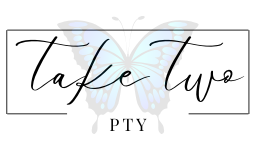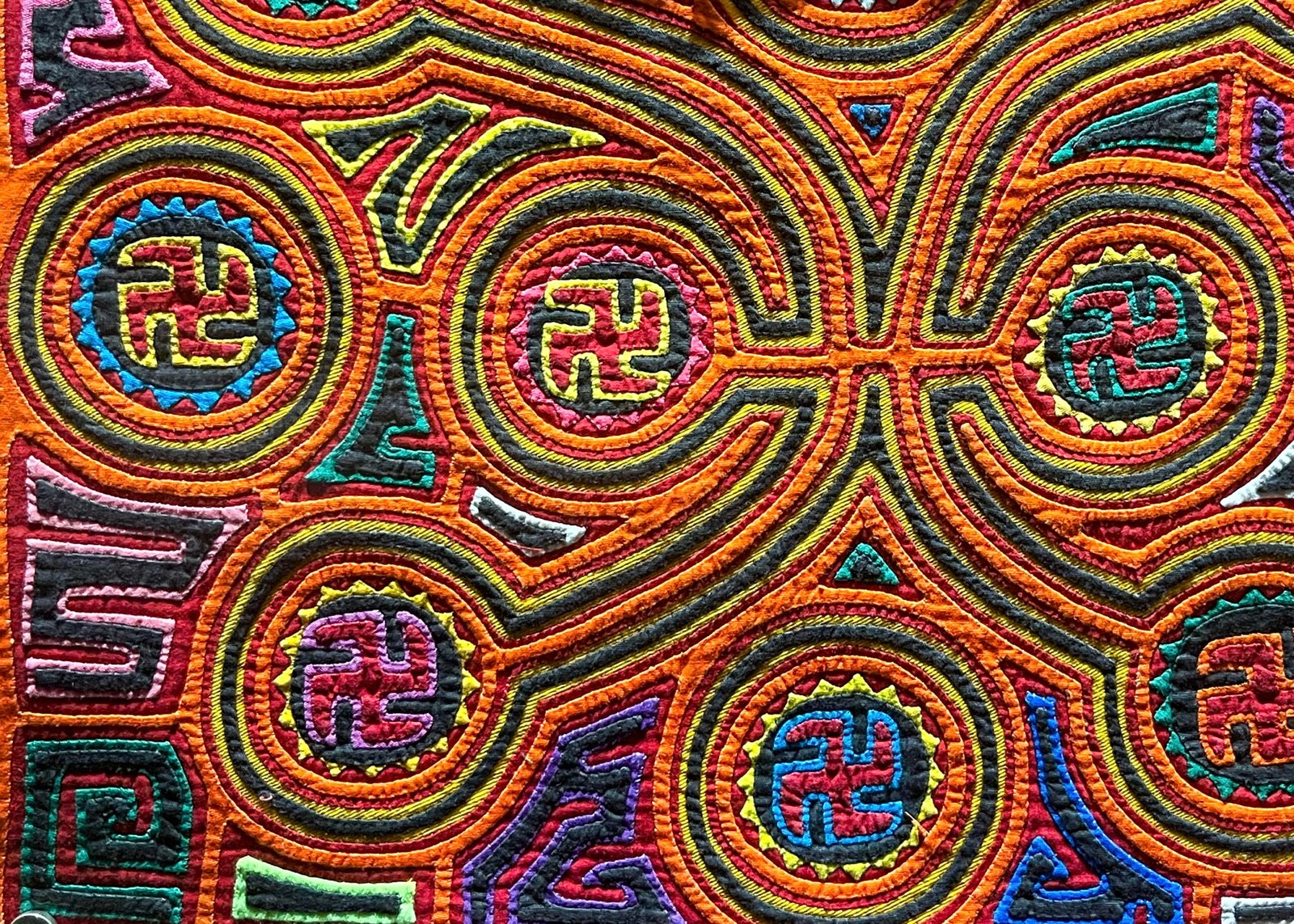
Wherever I travel, I love learning about local and indigenous cultures. Here in Panamá, the people of the Guna Yala Comarca stand out dressed in their eyecatching, brightly colored clothing selling their molas and beadwork on the streets of Casco Viejo. It’s one thing to grab a lovely souvenir to take home; it’s another thing to understand its meaning. If you’re planning a trip to Panama City, the Mola Museum should absolutely be on your itinerary. This treasure showcases the extraordinary craftsmanship of the Guna people, featuring their iconic reverse-appliqué textiles that tell stories of tradition, spirituality, and daily life. I’ve visited this remarkable museum many times and it’s truly an experience that will leave you with a deep appreciation for indigenous artistry and cultural preservation.
WHAT IS THE MOLA MUSEUM?
Located in the heart of Casco Viejo, the Mola Museum packs a powerful punch for an unbeatable free admission! Begin your visit to the museum with a deep dive into the story of the Guna universe. At each stop along the way, you´ll uncover the painstaking, step by step process and attention to detail required to make a mola. You’ll also learn more about the Guna perspective on life here on earth and beyond through their traditional artistry.

The Guna people inhabit the archipelago of Islas San Blas, 365 islands that hug the Caribbean side of the Panamanian coast stretching as far south as Colombia. The Mola Museum takes you through their historical timeline from the beginning as early inhabitants of the isthmus, to historic conflicts with the Panamanian government, The Dule Revolution of 1925, and, ultimately, their current semi-autonomous status as an “indigenous comarca” that has a high degree of control over their land and resources.
Opening in 2019, Museo de la Mola is the result of the combined efforts of private donors and the Alberto Motta Foundation whose mission is to promote projects in Panama in the areas of education, culture, health, the environment and dignified housing. The museum houses over 200 molas with designs ranging from geometric patterns and scenes from everyday life to pop culture.
RICH HISTORY AND CULTURAL SIGNIFICANCE OF THE MOLA
Centuries ago, Guna women would paint her body with dyes made from natural pigments, but over time, with the arrival of the Spanish, indigenous peoples were forced to alter their style of dressing for more modest looks. The answer was the mola or “blouse” with the geometric designs inspired by the ones they once wore on their skin.
Initially, Guna women painted designs on fabrics, but later transitioned to the reverse-appliqué methods that makes the mola what it is today. The multiple layers of colorful fabric and thread it takes to complete one of these beautiful works of art is truly astounding.
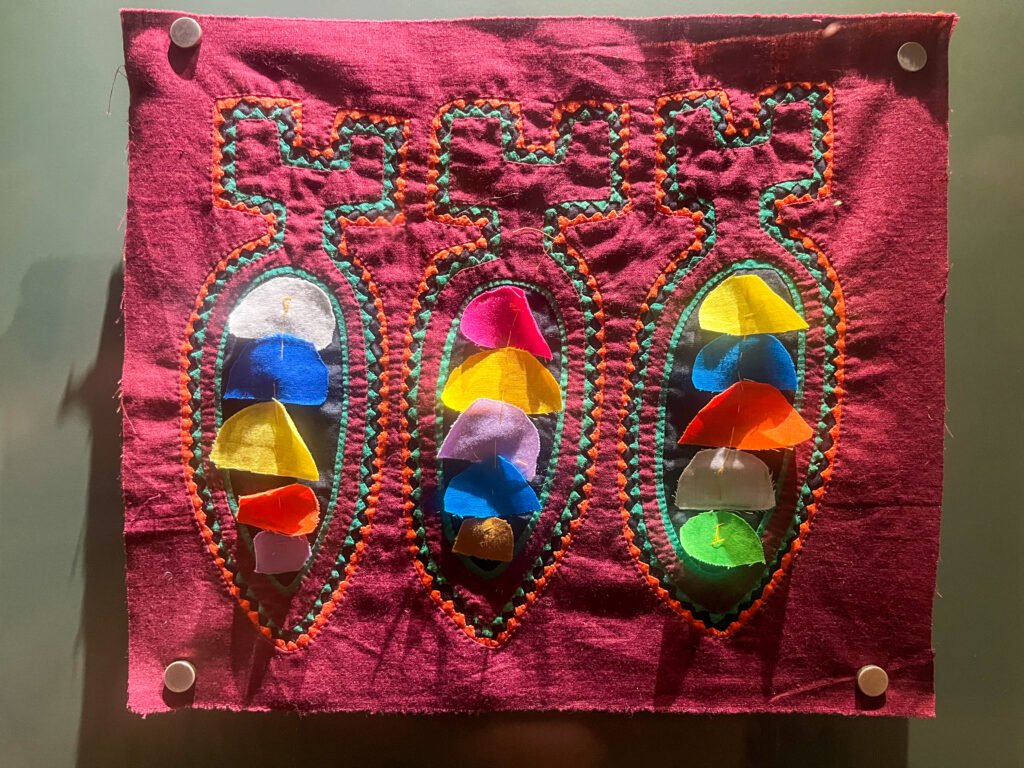
Like all cultures, the Guna use artistic expression to explain the world around them. Colors and geometric designs combine to depict levels of the universe, protection from malevolent forces, cardinal directions, nature and Guna history.
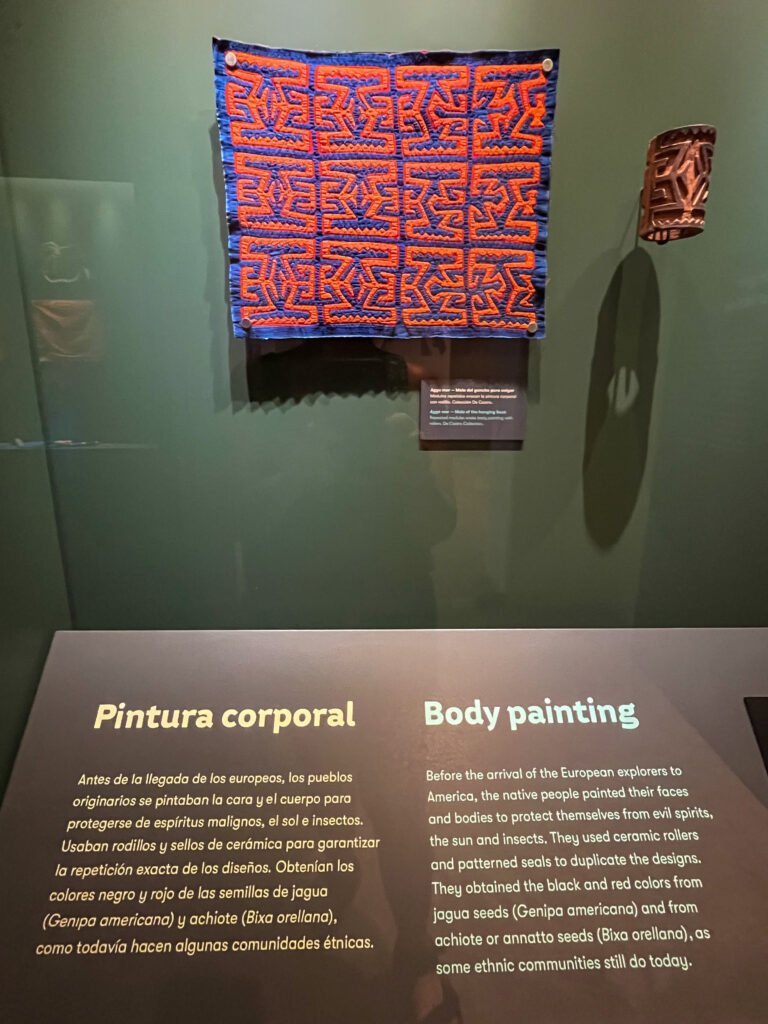

GUNA WOMEN
It is the Guna women who are the most emblematic of their culture in their traditional dress. Here in Panamá, you can see them wearing the following items:
- Mola (dulemor): The most recognizable part, these are panels of intricately sewn fabric, often featuring reverse appliqué techniques. They can be displayed as part of a blouse or framed as art.
- Saburet: A wrapped skirt, often blue or dark green, with geometric patterns.
- Musue: A red and yellow headscarf, sometimes printed with yellow drawings.
- Wini: Small beads threaded on cotton, worn on arms and legs as decorative ornaments.
- Olasu: A gold nose ring.
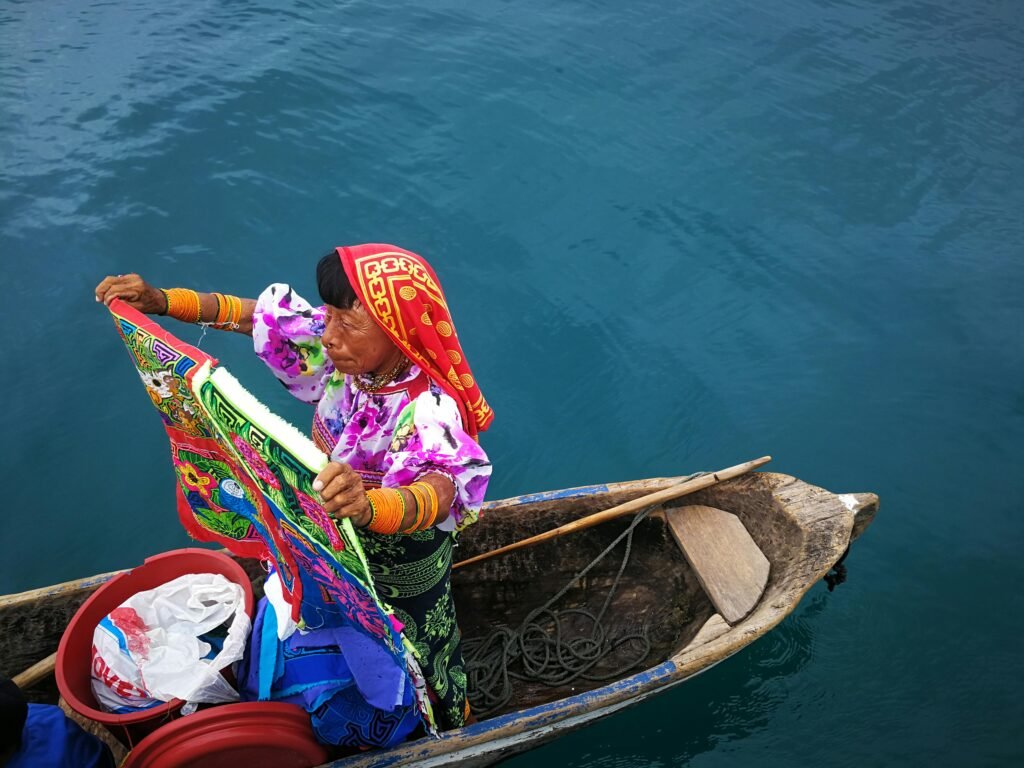
GUNA SYMBOLISM
As you peruse the collection of molas at the museum you will see many designs repeated over and over again.
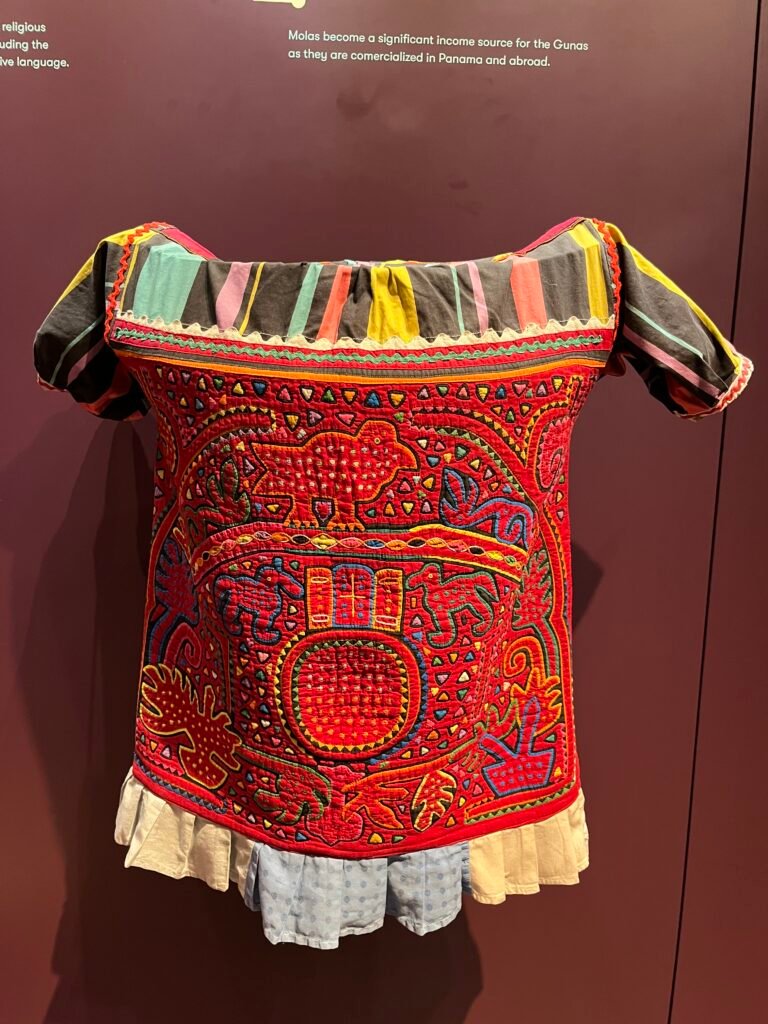
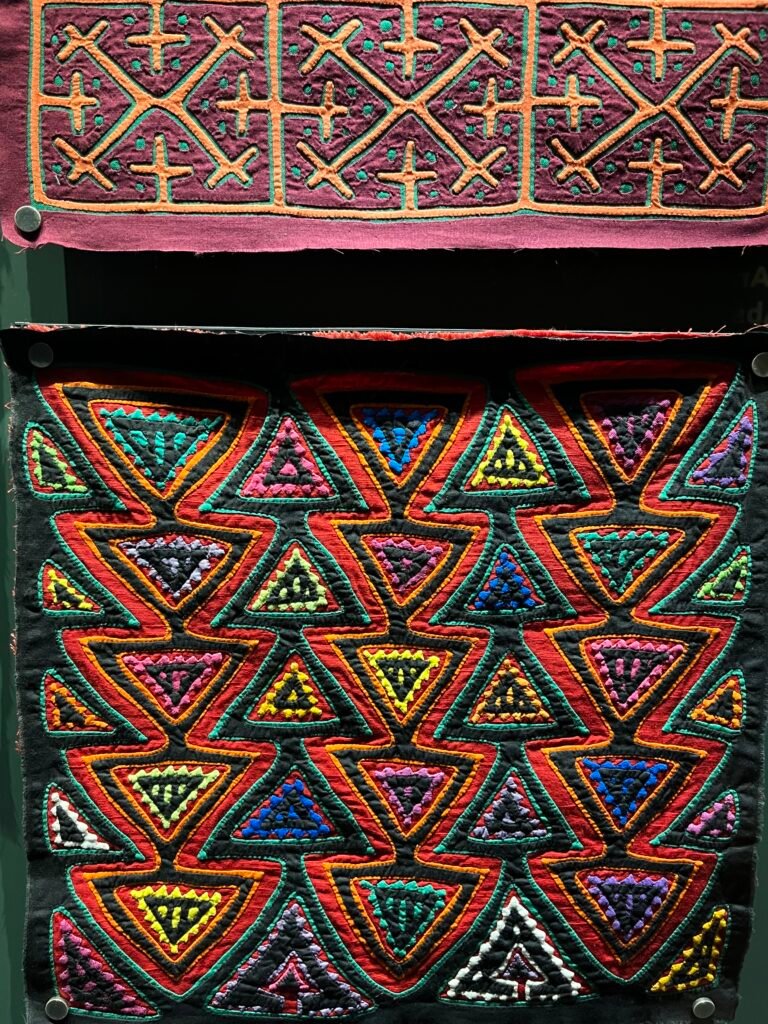
- Labyrinths often depict life’s struggles. They are also said to be worn as part of the mola to ward off malevolent spirits and energy.
- Lines represent the sun’s light streaming down toward the earth.
- Triangles represent the dwellings in which the Guna live.
- Swastika this ancient Indian symbol appears quite frequently in Guna art as well as on the Guna flag. The swastika moves in a counter-clockwise direction. The arms of the swastika symbolize the octopus that created the universe with its tentacles pointing in the cardinal directions. Furthermore it represents the four sides of the world from which peoples emerged. This symbol is energy and connection to the cosmos.
EDUCATIONAL PROGRAMS AND WORKSHOPS
In addition to keeping Guna culture alive, Museo de la Mola also strives for community outreach and education. Beyond the typical visit to the museum, there are monthly workshops tailored to varying age groups, rich in Guna traditions and artistry. While most of these special events take place at the museum, others take place in local schools or at cultural happenings around town. For information on upcoming workshops, check the “actividades” page on their website, Spaces fill up fast, so keep an eye out for the latest calendar of events to make your reservation.

My friend and I recently participated in a free macramé workshop and went homw with our own hammock we made in a couple of hours. It was a really fun and relaxing way to spend the afternoon.
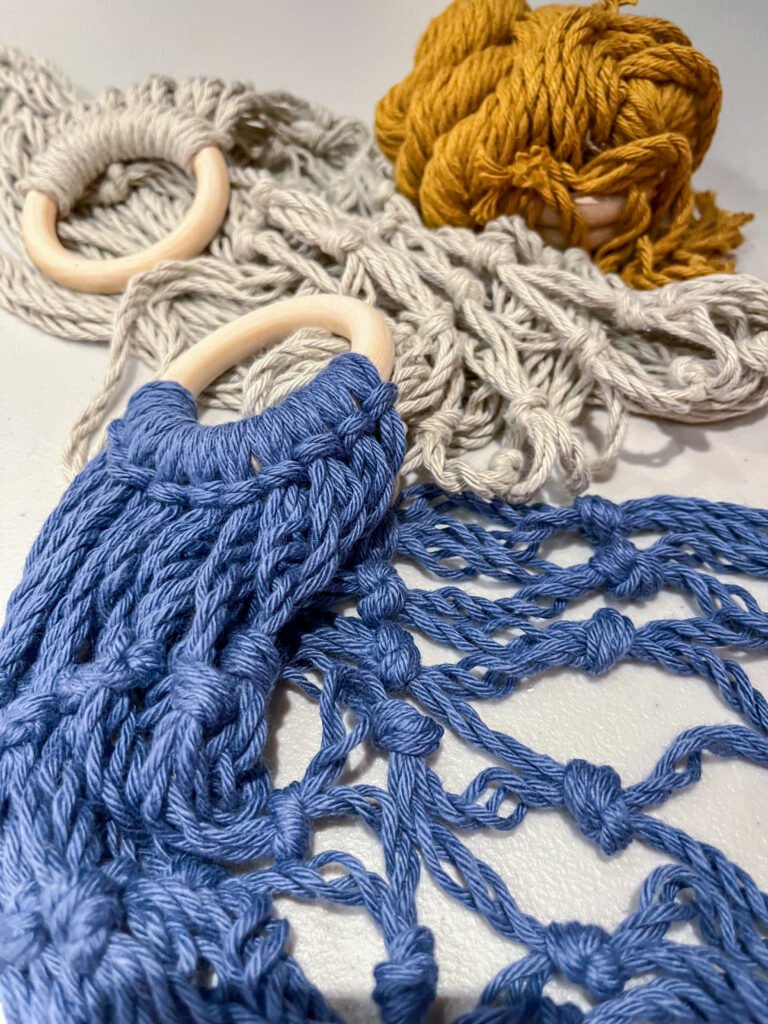
PLAN YOUR VISIT
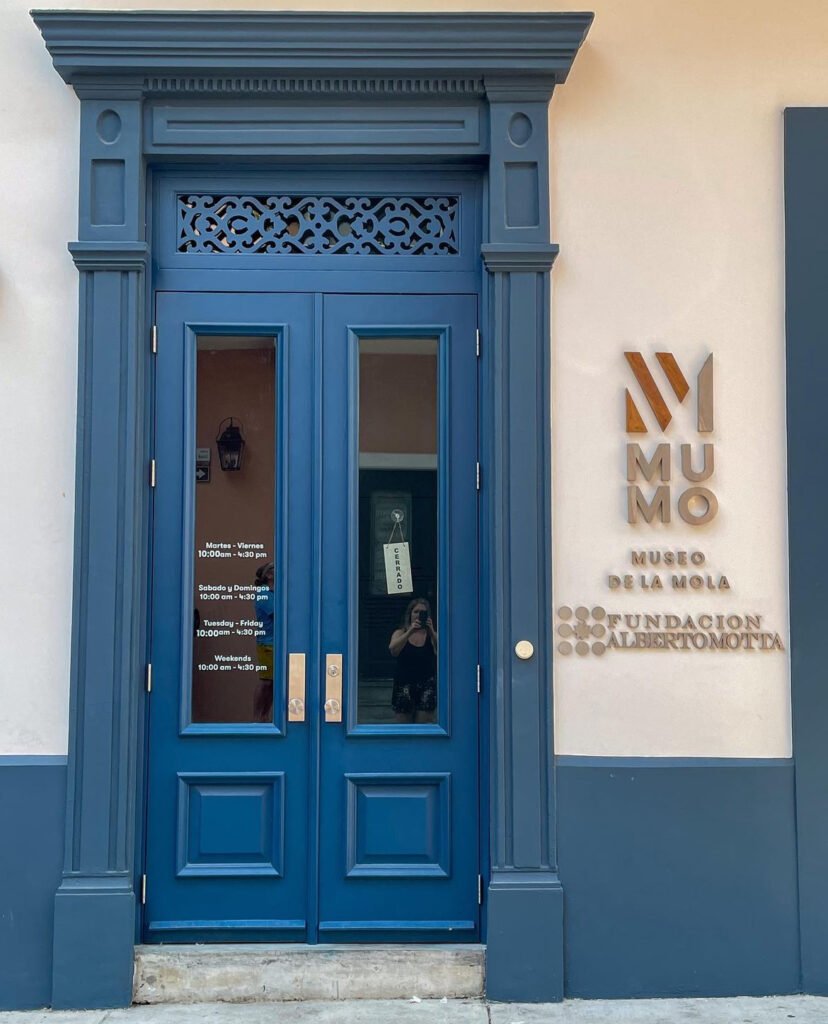
- Hours: Tuesday – Friday, 10am to 4:30pm, Saturday and Sunday, 10am – 5pm
- Admission: Free admission
- Visit time: Estimate between 30 to 60 minutes max for your visit.
GO STRAIGHT TO THE SOURCE AND VISIT ISLAS SAN BLAS
Disclaimer: Some of the links in my content may be affiliate links. That means that if you purchase a product or service that I recommend, I get a small cut of the sale. These affiliates don’t cost you anything extra and help me keep the site going. I will never endorse anything fake or not worth considering. Thank you for your continued support.
